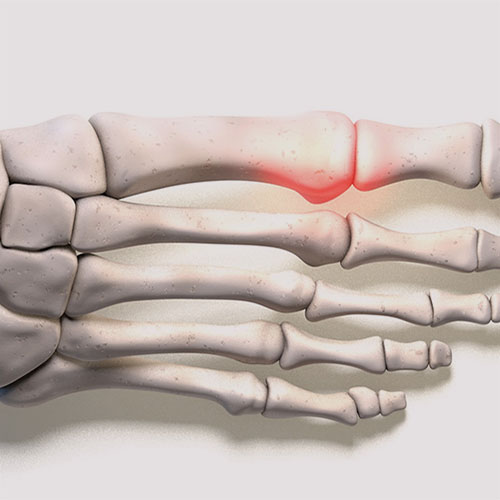 Want to receive Best Practice Bulletin directly to your inbox?
Sign up here.
Want to receive Best Practice Bulletin directly to your inbox?
Sign up here.
Published: 22nd August, 2025
Contents
New from bpacnz: Lead exposure and toxicity associated with Ayurvedic medicines

Ayurveda is a traditional medicine system that originated in India more than 3,000 years ago. Lead and other heavy metals including mercury, arsenic and cadmium, are commonly added to Ayurvedic medicines. This poses a significant health risk for people who use these products. This is highlighted by the recent lead poisoning case cluster in New Zealand; there have been 22 notified cases of lead poisoning confirmed or suspected to involve Ayurvedic medicines (up to May, 2025). Many of the patients were symptomatic and found to have blood lead levels well above the notifiable level (≥ 0.24 micromol/L), requiring hospital-level care. However, the non-specificity of the symptoms these patients presented with meant a diagnosis of lead toxicity was not always initially made.
This article summarises the recent lead poisoning case cluster and provides information on identification, confirmation of diagnosis and appropriate referral pathways for patients with elevated blood lead levels relating to their use of Ayurvedic medicines. General information on other relevant heavy metal exposures is also provided.
Key messages:
- Always ask patients about their use of complementary and alternative medicines (CAMs)
- Consider lead toxicity in patients with a history of Ayurvedic medicine use; they may present with non-specific symptoms and signs
- Arrange a blood lead level if lead exposure is suspected and notify your local National Public Health Service office; you can do this via the Hazardous Substances Disease and Injury Reporting Tool (HSDIRT) in your practice management system
Read the full article here.
Round up of recent bpacnz publications
Clinical Audit - Recovery at work
 Clinicians should generally consider “Fit for selected work” for most injured patients who are not “Fully fit” for work when issuing a medical certificate. This audit helps healthcare professionals to consider their decision-making about work-related medical certificates in the past 12 months, to assess whether the designation, and the overall proportion of “Fully unfit” medical certificates issued was appropriate. A “working audit” option is also provided.
Clinicians should generally consider “Fit for selected work” for most injured patients who are not “Fully fit” for work when issuing a medical certificate. This audit helps healthcare professionals to consider their decision-making about work-related medical certificates in the past 12 months, to assess whether the designation, and the overall proportion of “Fully unfit” medical certificates issued was appropriate. A “working audit” option is also provided.
View the audit here.
Read the comprehensive Recovery at Work guide, here. A B-QuiCK summary, case study quiz and peer group discussion are also available.
Gout case study quiz
 bpacnz recently published an interactive case study quiz on gout, following the story of Malo Fuimaono, a 47-year-old male who presents with severe pain in his right big toe. What can you do to help Malo? Do you feel confident that you can set Malo on a positive path towards long-term symptom control? Will you make the right call on the “extra for experts” scenario? Test your knowledge with the case study quiz here* and earn CPD points.
bpacnz recently published an interactive case study quiz on gout, following the story of Malo Fuimaono, a 47-year-old male who presents with severe pain in his right big toe. What can you do to help Malo? Do you feel confident that you can set Malo on a positive path towards long-term symptom control? Will you make the right call on the “extra for experts” scenario? Test your knowledge with the case study quiz here* and earn CPD points.
* You will need to log-in to “My bpac” or create a free account
Read the full article on gout, here. A B-QuiCK summary, clinical audit and peer group discussion are also available.
Recommended vaccinations for healthcare workers
 Healthcare workers are exposed to many vaccine-preventable diseases in their day-to-day work, so must maintain full immunisation coverage. Vaccination not only helps to reduce personal disease risk for the healthcare worker but may also lower the risk of transmission to patients. Read the full article here.
Healthcare workers are exposed to many vaccine-preventable diseases in their day-to-day work, so must maintain full immunisation coverage. Vaccination not only helps to reduce personal disease risk for the healthcare worker but may also lower the risk of transmission to patients. Read the full article here.

Medicines news
The following news relating to medicine supply has recently been announced. These items are selected based on their relevance to primary care and where issues for patients are anticipated, e.g. no alternative medicine available or changing to the alternative presents issues. Information about medicine supply is available in the New Zealand Formulary at the top of the individual monograph for any affected medicine and summarised here.
Upcoming out of stock of paroxetine tablets
Pharmac has announced that stock of paroxetine 20 mg tablets (Loxamine) will run out in late August due to a manufacturing delay. Resupply is expected by late September. An alternative brand (Paxtine) will be listed on the Pharmaceutical Schedule from 1st September. Pharmacists should note that the new brand is supplied in a 30 pack as opposed to a 90 pack. Advise patients that the new brand of paroxetine has the same formulation as their previous medicine and is made by the same supplier, but the packaging will be different as it is intended for use in Australia (it is approved in New Zealand).
A patient information leaflet is available, here.
Soframycin ear/eye drops out of stock
Supply issues affecting framycetin sulphate 0.5% ear/eye drops (Soframycin; partly funded), used in the treatment of otitis externa when a steroid is not required, are ongoing (as reported in Bulletin 128). Pharmac previously reported Soframycin would be re-supplied in August, but stock is now expected to arrive in September. Funded alternatives are available (click here for details), however, a new prescription will be required.
Nortriptyline brand change
Pharmac has advised of an upcoming brand change for funded nortriptyline tablets (Norpress) due to a decision by the supplier to withdraw this medicine from New Zealand. The new funded brand, Allegron (Medsafe approved), was listed on the Pharmaceutical Schedule from 1st August, 2025. Stock of Norpress is expected to reduce from October, 2025.
Pharmacists should advise patients taking nortriptyline that the new brand, Allegron, has the same active ingredient but other tablet excipients may be different. The appearance and packaging of their tablets has also changed: Allegron 10 mg tablets are white (Norpress is yellow) and Allegron 25 mg tablets are pale orange (Norpress is bright orange). The Allegron pack size is also smaller, and the foil blisters only contain ten tablets.
A patient information leaflet about the nortriptyline brand change is available here.
Dipyridamole discontinuation, alternate brand and prescribing restrictions
The supplier of dipyridamole 150 mg modified-release tablets (Pytazen SR) is discontinuing this medicine due to problems with accessing the active ingredient (as reported in Bulletins 117 and 123). Stock of Pytazen SR is expected to run out in September, 2025, and it will be delisted from the Pharmaceutical Schedule from 1st January, 2026.
Clinical advice remains to switch patients to a different antiplatelet (see below), however, Pharmac has decided to temporarily list an alternative brand of dipyridamole to allow more time for this switch to occur. The alternative product, dipyridamole modified-release capsules 200 mg (Dipyridamole – Strides), is a different formulation and strength to Pytazen SR and will be listed on the Pharmaceutical Schedule from 1st September, 2025. Advise patients to closely monitor for new or worsening adverse effects during and after the medicine change and seek medical attention if there are any concerns. This brand is not approved by Medsafe and so will need to be prescribed for supply under Section 29 of the Medicines Act 1981.
No new patients can be started on dipyridamole from 1st September, 2025.
Clinical advice is to switch patients still taking dipyridamole to either clopidogrel or aspirin monotherapy, as there will not be ongoing supply of dipyridamole (it is still planned to be delisted). Long-term dual antiplatelet treatment should only be used for secondary prevention of stroke or TIA under specialist supervision.
Tandem t:slim X2 insulin pump product alert
A product alert has been announced for the Tandem t:slim X2 insulin pump. People using this brand of insulin pump may be experiencing “malfunction 16” events, which if not addressed stops insulin delivery and results in a loss of communication between the insulin pump, the continuous glucose monitor and the mobile application, increasing the risk of hypoglycaemic events. The manufacturer has confirmed that the issue is related to the speaker on the pump and a software update will be released to enable early detection of speaker failure. NZMS (the local supplier) will notify people when this update becomes available.
People who use the Tandem t:slim X2 insulin pump are advised to enable push notifications for the mobile application on their phone, so they receive malfunction alerts. They should also regularly check their blood glucose level to confirm it is within acceptable parameters and be familiar with their backup method for administering insulin (which should have been arranged as part of the initial insulin pump set up and training provided by a diabetes multidisciplinary team).
If a “malfunction 16” event does occur, the patient can be advised to:
- Press “Silence Alarm” to acknowledge the alert as soon as possible
- Report the malfunction to the NZMS technical support team (phone: 0508 634 103), who will also arrange a replacement device
- Switch to their backup method for administering insulin
Reminder: Mesalazine supply issues ongoing
Supply issues affecting stock of mesalazine tablets (Asacol), used in the treatment of ulcerative colitis and other inflammatory bowel conditions, have been ongoing since 2024. The 400 mg tablets are currently out of stock. Both the 800 mg tablets and 1600 mg tablets (which were listed on the Pharmaceutical Schedule from July, 2025), are available. However, the 1600 mg tablet is not approved by Medsafe so will need to be prescribed for supply under Section 29 of the Medicines Act 1981.
Contact the initial prescribing clinician for guidance on appropriate treatment options, if required. N.B. Other oral mesalazine formulations, e.g. 500 mg modified-release tablets (Pentasa), are not generally considered directly interchangeable because of variations in delivery characteristics.
Decision to amend access criteria for COVID-19 antivirals
Pharmac has announced the decision to amend the eligibility criteria for funded access to COVID-19 antivirals, following consultation (as reported in Bulletin 123). From 1st September, 2025, all people aged 50 years or over who are considered by their healthcare professional to be at high risk of hospitalisation or death from COVID-19 will be eligible for funded antiviral treatment. This decision applies to both COVID-19 antivirals, nirmatrelvir with ritonavir (Paxlovid) and remdesivir (Veklury), however, only orally administered nirmatrelvir with ritonavir is prescribed in the community. All other eligibility criteria for funded treatment with COVID-19 antivirals remain the same; the access criteria can be found here.
This decision also impacts the way nirmatrelvir with ritonavir is ordered, supplied and claimed for, to align with other funded medicines. As part of these changes, a co-payment can be applied when dispensing nirmatrelvir with ritonavir from 1st September, 2025. For further information, click here.
Coming soon: Guidance on determining patients at high risk
bpacnz will be providing further guidance on groups considered to be at high risk of severe outcomes from COVID-19, to assist prescribers in their decision-making. This information will be available on our website by 1st September, 2025. A more comprehensive resource about prescribing antiviral medicines for COVID-19 is also in development.
Proposal to change clozapine blood monitoring and prescribing requirements
Medsafe is proposing changes to clozapine blood monitoring and prescribing requirements and is seeking feedback from both healthcare professionals and people taking the medicine. The proposed changes relate to the duration of blood monitoring, monitoring thresholds, management of low blood count results and who can prescribe clozapine.
If this proposal is accepted, patients taking clozapine who have no history of low blood counts and can self-manage their care, will not require blood monitoring beyond a specified treatment period (proposed between one and three years). Clozapine would still need to be initiated by a psychiatrist or a medical practitioner in consultation with a psychiatrist, however, some nurse practitioners, nurse prescribers and pharmacist prescribers would be able to continue clozapine prescribing, and re-initiate treatment if it was stopped due to a low blood count that was found not to be related to clozapine.
The proposal is also seeking feedback about the use of point-of-care testing for clozapine monitoring, and the educational needs of healthcare professionals related to prescribing and safety monitoring. N.B. This proposal does not include any changes to the clozapine special monitoring arrangements, e.g. for patients undergoing chemotherapy.
Consultation closes on 8th October, 2025. This link contains an online form for healthcare professionals to complete. The online form for people taking clozapine to provide feedback is available here.
A news item from the Ministry of Health, Manatū Hauora, about the consultation is available, here.
Read more about the proposal
People taking clozapine require regular blood tests to assess their white blood cell count (WBC) and absolute neutrophil count (ANC) due to the risk of neutropenia associated with treatment. Currently, these tests are required weekly for the first 18 weeks after initiation, and then every four weeks for the remaining duration of treatment.
If this proposal is accepted, the following changes to the clozapine monitoring requirements would apply:
- Duration of required blood monitoring
- People taking clozapine who fulfil the following criteria would not require continued blood monitoring after a defined period (either one, two or three years):
- Have been taking clozapine consistently for the whole time period
- Have a history of ANC ≥ 1.0 x 109/L , or ≥ 0.5 x 109/L in people with benign ethnic neutropenia (BEN), while taking clozapine
- Have had no previous confirmed clozapine-induced severe neutropenia/agranulocytosis
- Are adherent to treatment
- Are independent and able to self-manage their medical care
- Can identify symptoms and signs of infection, and can seek assessment and a blood test from a health professional if they occur
- Blood monitoring thresholds
- WBC would be removed from the “traffic light” monitoring system – only ANC would be measured
- The ANC thresholds for each colour of the “traffic light” system would be reduced, with different thresholds specified for people with BEN
- Management of low blood count results
- Management of “red” low blood count results would involve an immediate clinical review with daily blood monitoring to confirm and determine the cause of the result, instead of immediate cessation of treatment (if clinically appropriate)
- Treatment could be re-initiated following a “red” low blood count result if the result is determined to be unrelated to clozapine treatment
- Who can prescribe clozapine
- Prescribing restrictions for the continued prescription of clozapine would be extended to include:
- Nurse practitioners working as part of a community mental health team
- Nurse prescribers under the supervision of a psychiatrist
- Pharmacist prescribers under the supervision of a psychiatrist
South GPCME 2025: Top ten takeaways
The bpacnz Publications Team has returned from the South GPCME 2025 conference in Christchurch, revitalised and with a plethora of new ideas and opportunities ahead of us. It was an incredible experience to meet so many of our readers and hear such positive feedback about our educational resources. We would especially like to thank the South Link Education Trust who supported us to attend. We are planning to bring more conference-related items to the Best Practice Bulletin in the coming weeks, however, to start we have put together a list of the key takeaways that stuck with us from the weekend.
Publications Team’s top ten takeaways from South GPCME 2025:
- Don’t hesitate – start pharmacological interventions early and tailor these to the patient in front of you. Many speakers highlighted the beneficial effects of antihypertensives, statins, SGLT-2 inhibitors and GLP-1 receptor agonists for cardiovascular disease and diabetes, while stressing that prescribing delays due to hesitation about the appropriateness of treatment (or conventional stepwise approaches to management) may lead to patients missing out on the maximum treatment benefits. “Treat it as you see it”.
- Don’t assume – in the context of the previous bullet, clinicians shouldn’t assume that patients and their family/whānau cannot afford a treatment or intervention, e.g. if they do not qualify for funding for SGLT-2 inhibitors or GLP-1 receptor agonists but still would benefit. Some people will make their health a priority when budgeting. It may also be possible to claim the cost of treatment via WINZ.
- Continuous glucose monitors (CGMs) have potential benefit for everyone with diabetes, including those with type 2 diabetes taking either oral medicines or insulin (for whom a CGM would not be funded). In a patient with type 2 diabetes, a CGM may provide important feedback about optimising medicines and can help with motivation to make lifestyle changes. The cost of self-funding CGMs differs by brand. Consider offering a CGM trial to all of your patients with diabetes; many companies offer free trial packs.
- SGLT-2 inhibitors are beneficial for patients with diabetes, chronic kidney disease and heart failure and the evidence is clearer than ever. They are currently funded with Special Authority approval for patients with type 2 diabetes or heart failure with reduced ejection fraction in specific circumstances. The usual dose of empagliflozin is 10 mg, once daily, with little additional cardiovascular benefit with higher doses, i.e. 25 mg, once daily. Some treatment benefits are apparent within 30 days of initiation – this may justify a trial in patients with indications for treatment but who do not meet criteria for funding.
- SGLT-2 inhibitors have a diuretic effect; advise patients to take their medicine in the morning – if they are already taking a diuretic, this may need to be adjusted
- For people who are self-funding their treatment, consider prescribing empagliflozin 25 mg tablets at a dose of 12.5 mg (half a tablet), once daily, to spread the cost over a longer period (the price of 10 mg and 25 mg tablets is often similar)
- Ezetimibe is often overlooked when it comes to lipid-lowering treatment, but when added to a statin regimen, it can result in up to a further 20% reduction in lipid levels. Therefore, it may be an “eze” win for some patients! And the answer to “how low should you go?” – as low as you can, even as low as < 1.0 mmol/L LDL-C in a patient who has already had a CVD event.
- Is there a relationship between scabies and rheumatic fever? Broken skin from scabies, other insect bites and impetigo provides an entry point for Group A streptococcus (GAS) and may fit the socioeconomic distribution of rheumatic fever in New Zealand better than the conventional sore throat model. Further research is needed on this and other potential sources of GAS infection but definitely an interesting discussion.
- Measure eosinophils when a patient with asthma or COPD is well. Oral prednisone taken during an acute exacerbation suppresses eosinophil levels and may influence the patient’s eligibility for funded treatment, e.g. biologics for eosinophilic asthma and triple therapy inhalers for COPD which require an elevated eosinophil count in the previous 12 months to meet Special Authority criteria.
- Patient intuition can be an important diagnostic tool. If a patient is concerned about a skin lesion, but it looks ok to you, still give it serious consideration – a proportion of skin cancers do not have the accepted diagnostic features and an opportunity for early intervention may be missed. Repeat photographic monitoring over time is also recommended because changes can be subtle and could be missed at a one-off assessment.
- Talk to parents about being first aiders - the use of early and appropriate first aid in childhood accidents and burns is critical. Do you discuss or recommend first aid training with your patients who are parents?
- “Medicine breeds medicine”. In an ideal world, lifestyle intervention comes first, and if successful, medicines won’t be needed for the most part for conditions influenced by this. The problem is that there are so many factors that challenge our ability to fill our wellness cup. “Eat well” assumes that people can access and pay for good quality food. “Exercise well” assumes that people have the time, means and method to do so. “Sleep well” assumes that people have a warm bed and quiet environment to clock up their eight hours. “Be well” assumes that we are resilient and mentally strong and able to address any problems that come our way. The reality is that most people struggle with at least one of these factors. The solution? Encourage patients to do their best, focus on what they can achieve within their means and situation. It's ok to be good enough, but you at least have to try.
Disclaimer: These points are written from the perspective of the bpacnz Publications Team who attended these presentations at the conference. Speakers often give pragmatic advice regarding their approach to clinical situations, and this may differ from evidence-based practice. These points are included for reflection and discussion amongst your colleagues.
World Sepsis Day in September
World Sepsis Day is coming up on Saturday, 13th September, providing an opportunity to raise awareness about sepsis and promote prevention measures. Globally, there are an estimated 47 to 50 million cases of sepsis per year, with 40% occurring in children aged under five years. Sepsis is also the cause of one in five deaths worldwide. Early recognition of symptoms and timely treatment are essential to prevent sepsis-related death, as is prevention of infection through vaccination, hygiene and other infection control measures.
The theme for this year’s World Sepsis Day is 5 facts x 5 actions, which aims to highlight five key facts about sepsis, and five actions which can be put in place to prevent sepsis-related death. Further information is available from: https://www.worldsepsisday.org/.
Sepsis Trust NZ is inviting individuals to be SEPSIS Superheroes this September, by hosting a workplace morning tea or other event to raise awareness. For further information, see: https://stopsepsis.org.nz/.
Resources for World Sepsis Day, including infographics, posters, videos and handouts, are available from: https://www.worldsepsisday.org/toolkits
For further information on identifying the risk of sepsis in young children with fever, see: https://bpac.org.nz/2024/fever.aspx
 Paper of the Week: Gabapentin may be preferable to pregabalin in older adults at risk of heart failure
Paper of the Week: Gabapentin may be preferable to pregabalin in older adults at risk of heart failure
Limited effective pharmacological treatment options can make managing pain challenging. First-line treatment options for neuropathic pain are gabapentinoids (gabapentin and pregabalin) or tricyclic antidepressants (nortriptyline and amitriptyline). There is no evidence supporting superior efficacy of either class of medicine, therefore the prescribing decision is based on adverse effect profiles, interactions with existing medicines and co-morbidities. Gabapentinoids may be preferred in older patients at increased risk of anticholinergic burden, which would be exacerbated by the addition of a tricyclic antidepressant. There is no evidence that gabapentinoids are effective for nociceptive pain and they should not be used as a general analgesic or on an “as needed” basis.
Gabapentinoids are not without problems; common adverse effects include sedation, increased falls risk, weight gain, mood changes and respiratory depression, along with the potential for medicine misuse and addiction. Increasing evidence has also identified peripheral oedema and heart failure as less common but significant adverse effects. Pregabalin has a higher receptor binding affinity for specific calcium channel subtypes and increased potency relative to gabapentin, therefore may have a higher risk of cardiovascular-related adverse effects. However, there is currently limited evidence supporting this theory; most gabapentinoid safety studies to-date have focused on neurological effects and have not examined the impact of cardiovascular risk factors, e.g. older age, heart failure, on the development of adverse effects.
A study published in JAMA Network Open examined whether the risk of developing heart failure was higher for older patients prescribed pregabalin for chronic pain, compared to those prescribed gabapentin. It was found that risk was approximately 50% higher in patients prescribed pregabalin. This effect was more pronounced in participants with a history of cardiovascular disease. These findings suggest that, if indicated, clinicians should consider prescribing gabapentin instead of pregabalin in older adults with a history of cardiovascular disease or other risk factors for the development of heart failure.
Were you aware that heart failure is a potential adverse effect of gabapentinoids? What patient factors do you consider when deciding between prescribing pregabalin, gabapentin or a tricyclic antidepressant for neuropathic pain? What non-pharmacological advice do you give about neuropathic pain management? Are there any situations in which you think the potential benefits of prescribing gabapentinoids for an unapproved indication outweigh the harms, e.g. for sciatica or non-specific back pain?
Read more
- This was a retrospective cohort study carried out in the United States of America
- Medicare databases were used to identify eligible participants aged 65 to 89 years with chronic non-cancer pain who had received their first prescription for pregabalin or gabapentin between January, 2015, and December, 2018
- The study population was two-thirds female (66.8%) and participants were predominantly non-Hispanic European (79.9%)
- Participants with a history of heart failure, terminal illness or prolonged admission to hospital or other care facilities were excluded
- A diagnosis of neuropathic pain, either alone or in combination with other pain diagnoses, was reported for 60.8% of participants. Musculoskeletal or soft tissue pain (71.7%) and back pain (68.0%) were the most common chronic pain conditions reported. Other pain conditions included joint pain, inflammatory pain and headaches (including migraine).
- Participants were followed from the date of their first gabapentinoid dispensing until hospitalisation or emergency department visit with a primary diagnosis of heart failure (primary end point), primary diagnosis of heart failure at an outpatient visit or death (both secondary end points)
- During the study period, 18,622 participants (7.6%) were initially prescribed pregabalin and 227,615 participants (92.4%) were prescribed gabapentin. Similar rates of previous cardiovascular disease diagnoses and concurrent medicine use were reported for both groups.
- A new diagnosis of heart failure was reported in 1,470 participants (1.3%) over approximately 114,000 person-years of follow-up
- The risk of being diagnosed with heart failure was approximately 50% higher in the pregabalin group compared to the gabapentin group - adjusted hazard ratio (AHR) = 1.48, 95% confidence interval (CI) = 1.19 – 1.77
- The incidence of heart failure was 18.2 (95% CI = 15.3 – 21.6) per 1,000 person-years for participants prescribed pregabalin and 12.5 (95% CI = 11.9 – 13.2) per 1,000 person-years for those prescribed gabapentin
- When analysis was stratified by patient group, pregabalin was associated with a significantly increased risk of heart failure relative to gabapentin among:
- Patients with a history of cardiovascular disease - AHR = 1.85 (95% CI = 1.38 – 2.47)
- Females - AHR = 1.57 (95% CI = 1.23 – 2.00)
- No significant difference in all-cause mortality was observed between the pregabalin and gabapentin groups
- A potential limitation of this study was the lack of control for many cofounders associated with the development of heart failure, e.g. body mass index, smoking, diet, physical activity levels, and socioeconomic status, which could influence these results
- This study did not specifically investigate the use of gabapentinoids in neuropathic pain; the study population included individuals with chronic pain across a range of pain disorders. Many patients also reported multiple pain disorders, and it was not possible to determine the primary disorder for which gabapentinoid treatment was indicated for each patient.
- In New Zealand, the use of gabapentinoids for pain management is only approved for neuropathic pain; use for other types of pain is unapproved and not recommended. The results of this study may therefore be less relevant to the New Zealand patient cohort.
- The authors also acknowledge that these findings may not be generalisable to all populations due to the lack of diversity within the study cohort
- This US-based study population does not directly reflect the New Zealand population, where Māori and Pacific Peoples are disproportionately affected by heart failure
Park EE, Daniel LL, Dickson AL, et al. Initiation of pregabalin vs gabapentin and development of heart failure. JAMA Netw Open 2025;8:e2524451. doi:10.1001/jamanetworkopen.2025.24451.
For further information on prescribing gabapentinoids in primary care, see: https://bpac.org.nz/2021/gabapentinoids.aspx
 This Bulletin is supported by the South Link Education Trust
This Bulletin is supported by the South Link Education Trust
If you have any information you would like us to add to our next bulletin, please email:
editor@bpac.org.nz
© This resource is the subject of copyright which is owned by bpacnz. You may access it, but you may not reproduce it or any part of it except in the limited situations described in the terms of use on our website.

